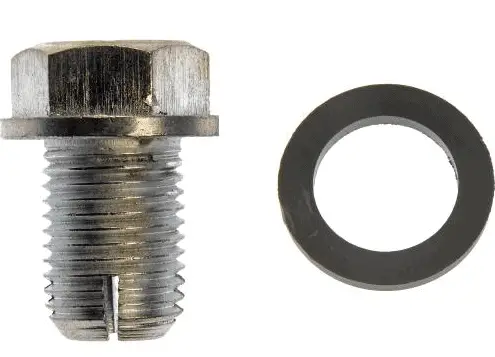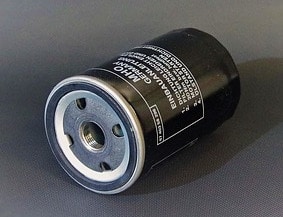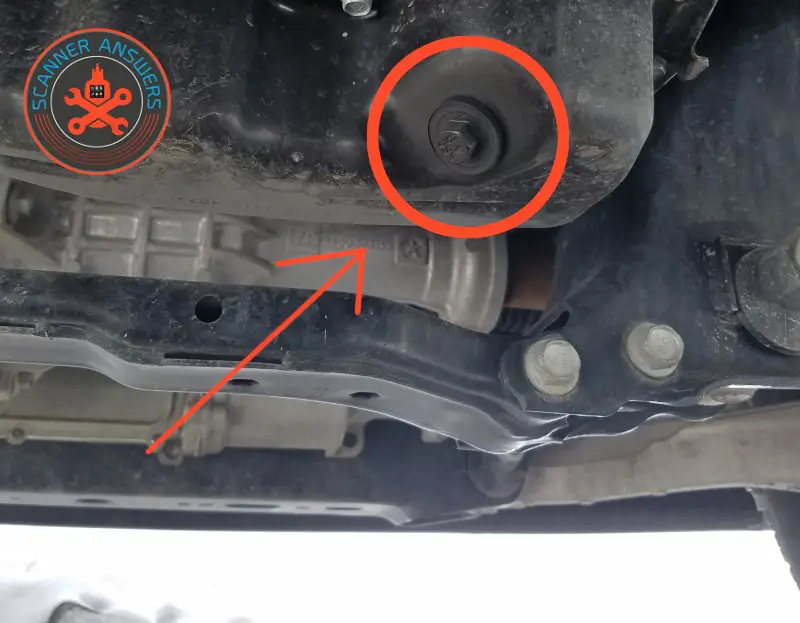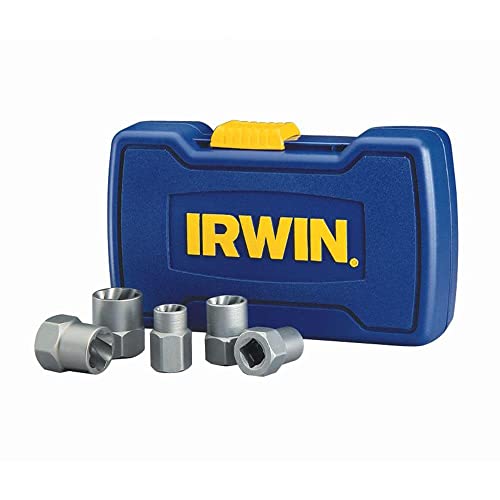
How to Remove a Stripped or Rounded Oil Drain Plug
Matt here.
Have you ever wondered how to remove a stripped oil drain plug bolt? You know that feeling when your socket wrench slips and you pull it off the bolt only to see that the head of the bolt is rounded off. Last time I did this to my old 99 Corolla, my face went pale white like a ghost and I spent the rest of the day trying to figure out how the heck I was going to remove that stupid bolt!
Introducing the Bolt Extractor Kit
Back when I stripped the oil bolt on my beloved Toyota I didn’t have the luxury of using Google and the internet to search for car solutions like you have right now – so I made lots of mistakes trying to remove that bolt.
Well today I’m writing this article to help you avoid some of the mistakes that I made and show you how to correctly remove a stripped oil drain plug.
First things first, you want to pick up a bolt extractor set. This tool makes rounded oil plug removal a breeze! They are about $25-$100 bucks and you can get them at your local Autozone, NAPA, Harbor Freight, or you can find them online at Amazon (link below).
Here’s what you’re looking for:
Note: Before buying the extractor kit, make sure you get the right size to fit your oil bolt. The size of the bolt should be in your owner’s manual under the oil change section, but it’s probably a 1/4 inch or 3/8 inch head.
The four common oil drain bolt sizes are: 1/4 inch, 3/8 inch, 1/2 inch and 3/4 inch.
How to use a bolt extractor set for rounded oil plug removal

Step One – Get a replacement oil bolt plug
I like to do everything as efficiently as possible, so this means getting the old plug out, and the new one in, with just one trip under the car. Fortunately, an oil drain plug is a pretty standard and inexpensive item, and my local parts guy has them in stock. You can also find them online for pretty cheap.
Step Two – Get the necessary tools together
One trip under the car also means having the right tools at my fingertips when it’s time to use them. Here’s my list:

and a new oil filter before you start!
- Replacement oil and filter.
- A socket wrench and socket.
- An extractor socket – Irwin makes a great set.
- An oil drain pan.
- A car jack and stands or drive up ramps.
- A mechanics creeper or large piece of cardboard.
- Newspaper or plastic drop cloth.
- A piece of cardboard large enough to put the tools on.
- Safety glasses or goggles.
Step Three – Get set up.
Place two layers of newspaper in a three-foot by three-foot square under the oil pan. I prefer two layers for extra protection in the driveway. I like to put my tools on a small piece of cardboard and slide it to a spot under the car where it won’t be in my way but, I can easily reach the tools on top of it.
Step Four – Remove the stripped plug and install the new plug.
Before finishing this step, you’ll probably need a specialized tool called a bolt extractor. The one that I prefer is a socket set made by Irwin. These are special sockets that will cut into the bolt head to grip it and allow you to extract it. Here’s the one I’m talking about.
I start any oil change by warming up the car because oil thins out and drains better when it’s warm than when it’s cold. Plus, warming up the oil pan will help with getting the old plug out, as things with threads turn easier when they’re warm. I like to jack up the front of the car high enough to let me slide under and work comfortably. For safety, I use a stand instead of relying on the jack, put the emergency brake on, and place chocks behind the three wheels still on the ground.
There are actually a few methods to remove a bolt or plug with a stripped head but, for this type of job, nothing beats an extractor socket. It’s sometimes possible to file down the head on opposite sides and slip an open-end wrench on it. Another way would be to drill a pilot hole in the center of the head and use a screw extractor. But, both of these methods require much more work than using an extractor socket.
Once I have my safety glasses on and get in position under the vehicle, I test different size sockets over the stripped head. The right one will almost, but not quite fit. It will be a little too small and need to be tapped down into place. The YouTube video came in handy as it warned against tapping too hard and cracking the oil pan. For frozen bolts, a long handle ratchet comes in handy and provides some extra leverage, especially from the awkward position of laying face up under the car. Once the seal between the oil drain plug and pan is broken, a couple of turns on the wrench should get the plug loose enough to turn by hand. After that, the rest is just a routine oil change. At least as long as I don’t over tighten the plug.
Junky DIY guy did an excellent how-to guide on 5 different ways to remove rounded or stripped bolts. Check it out!
Common Questions about Oil Drain Plugs
What is an oil drain plug?

This simple, cheap bolt plays a very important role in keeping your car/truck on the road. It simply screws into the bottom of your oil pan to keep the oil from leaking out. When it’s time to change the oil (hopefully every 4 months) you loosen this bolt and let the oil drain out. Compared to the some of the other engine components, this is a simple part of your vehicle!
The drain plug bolt has a self-sealing gasket that prevents any oil leaks. This means you have to be careful when tightening down the bolt because you can not only strip the bolt head but also damage the gasket.
What size is a oil drain plug?
The most common sizes are 1/4″ (7mm), 3/8″ (10mm), 1/2″ (13mm) and 3/4″ (19mm). This will of course change between brands (Ford vs Toyota) and vehicle types (car vs truck vs SUV).
Pro TipIf you don’t know the exact size of your plug and don’t have your owner’s manual here’s a trick: go to RockAuto.com and enter in your vehicle information. Here’s an example of a 2002 Buick that has a 15mm drain plug size.
What is the torque for oil drain plug?
Not to sound like a broken record, but you’ll want to consult your owner’s manual to find the exact torque for your vehicle. If you have a torque wrench tighten the bolt to about 25lb. If you don’t have a torque wrench, just screw it in with your hand until it’s “hand tight,” then place your socket or wrench on the bolt and turn about 1/2 turn.
Make sure you don’t overtighten the drain plug! Like we mentioned previously, this bolt has a self-tightening washer that will secure it against the drain pan. Overtightening is probably what got you into the predicament to be reading this article on how to remove a stripped oil plug 🙂
Conclusion
There are so many places these days to get a quick oil change that it almost seems crazy to do it yourself. They all offer some great deals, too. But if you’re like me and like to use a heavy-duty filter and synthetic oil you’ll benefit from changing the oil yourself.
Related: Why Are Mercedes Oil Changes So Expensive
Pro tip – Check out the best 454 motor oil for RVsUnfortunately when we do our own work we risk making mistakes. That’s what happened to me when I overtightened my drain plug and even stripped the head slightly. Luckily, a bolt extractor set makes removing stripped oil drain plugs a breeze
If you have any questions or comments about this process, please contact us and we’ll be happy to help 🙂
Matt

